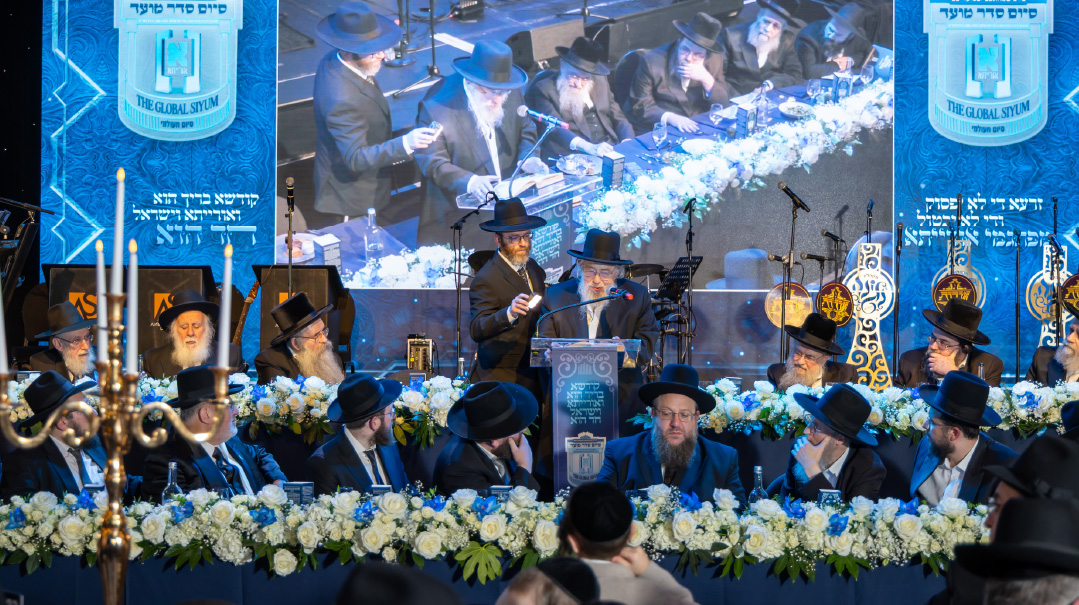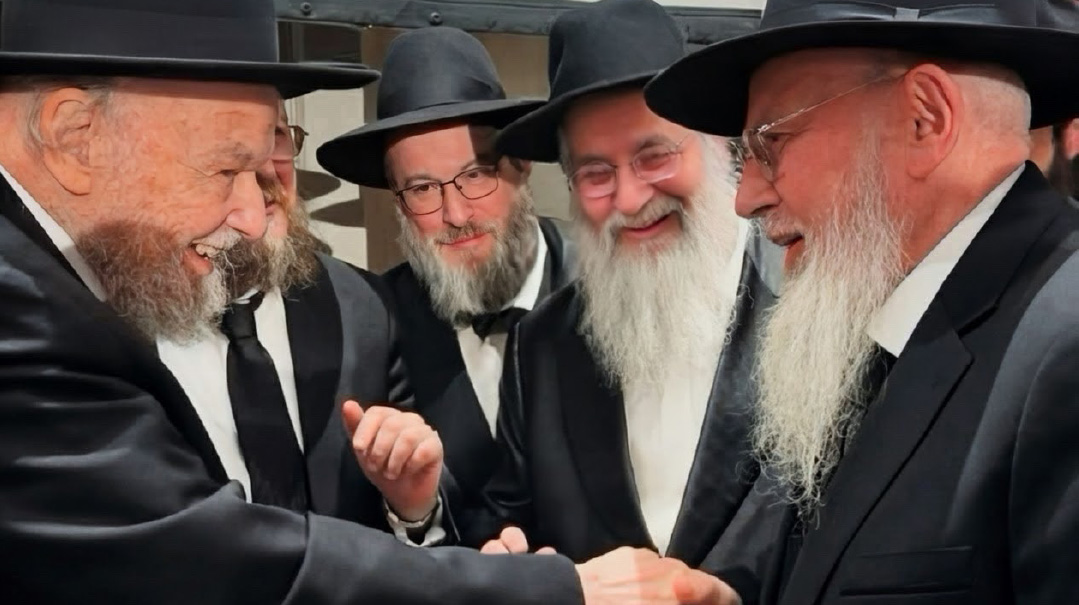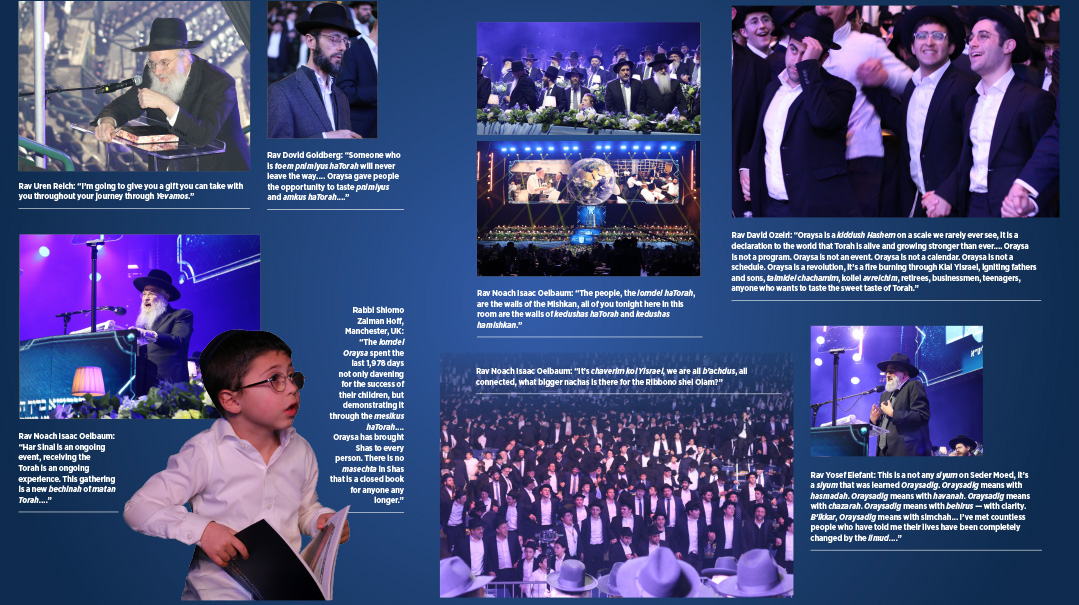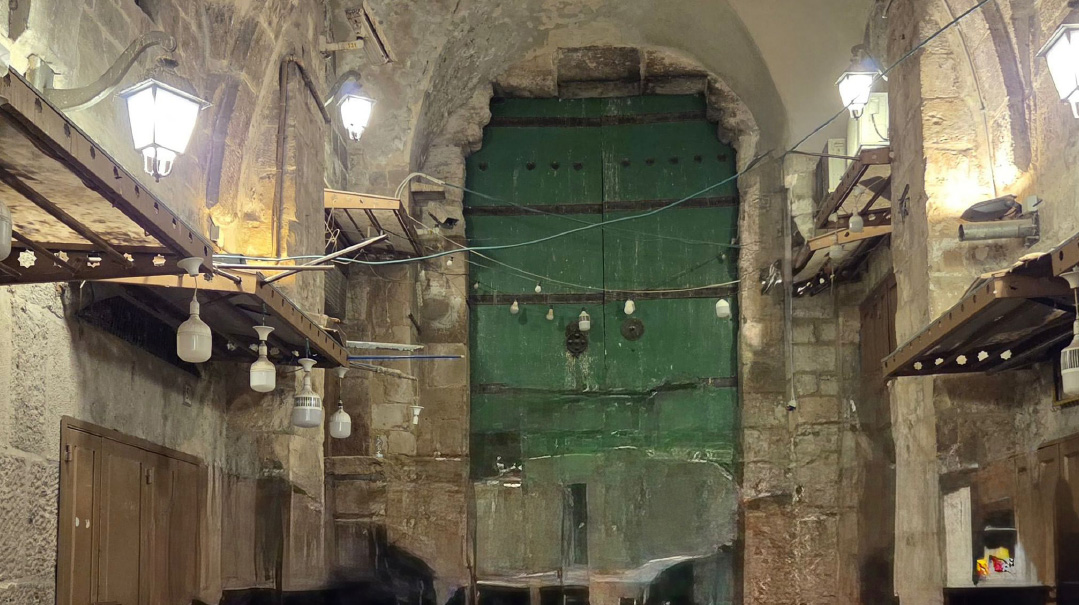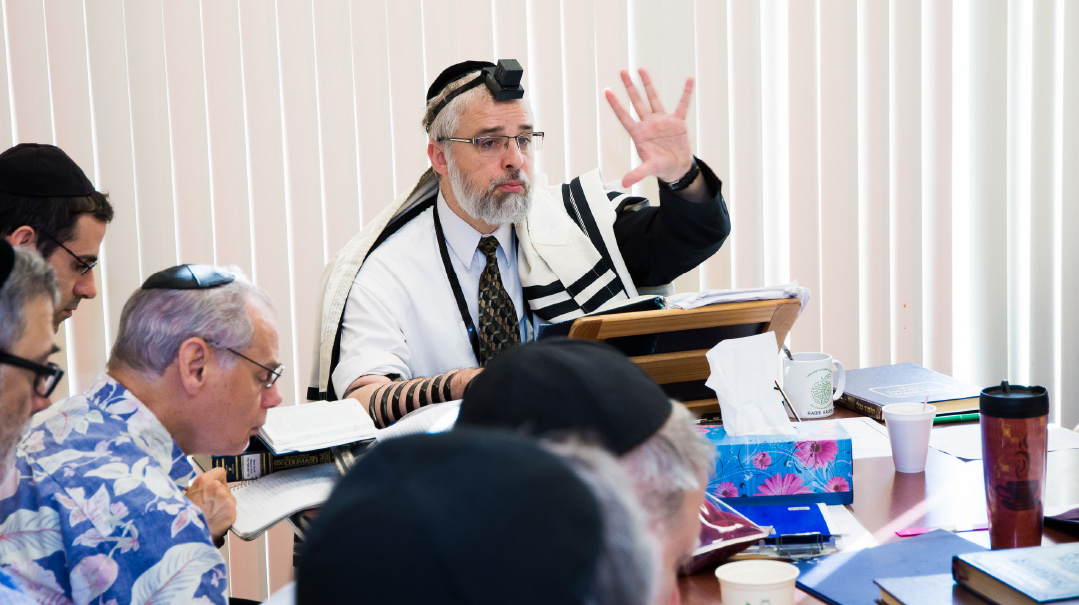The Moment: Issue 1056
| April 22, 2025A solo portrait would have captured the gadol hador’s visage — but this one captured his essence
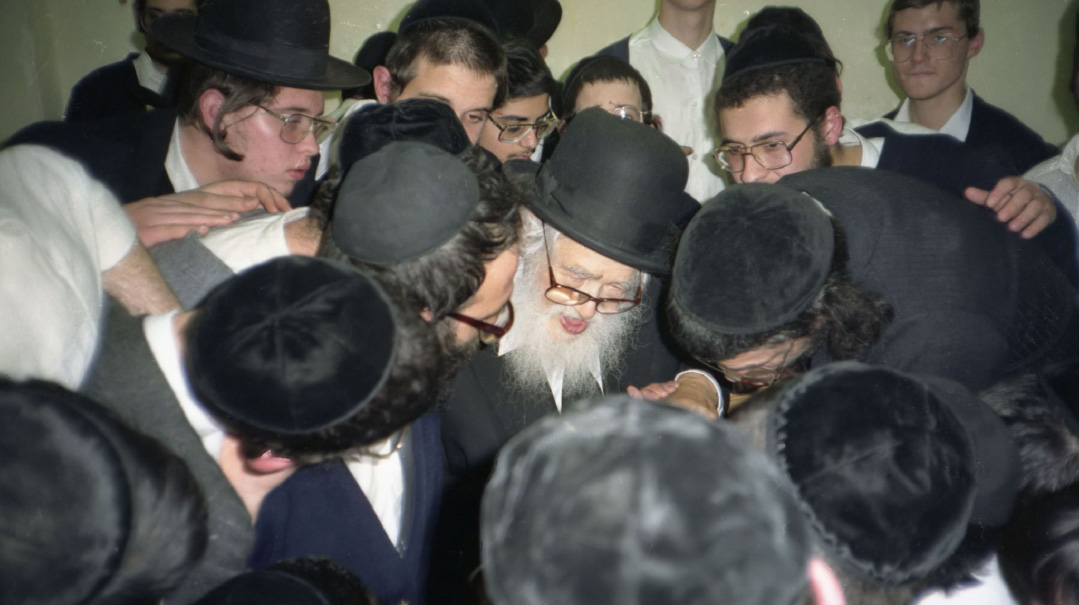
Living Higher
A
few weeks ago, well-known videographer Psachya Skaist was sifting through a pile of papers and miscellaneous items when he came across an old negative he hadn’t seen in years. It evoked a wonderful memory from his yeshivah days. Back in the ’90s, he was a student in Yeshivas Bais Yisroel in Yerushalayim. One day, his rebbi, Rav Chusid, said to the class: “Rav Shach is giving a shmuess in Ponevezh today. He is not getting any younger. Take advantage of the opportunity and go hear him speak.”
The whole class boarded a bus and traveled to Bnei Brak. After a quick visit with Rav Chaim Kanievsky, they proceeded to Ponevezh where they listened to Rav Shach’s shmuess, enraptured by the sanctity infused in every word. After the shmuess, Psachya exited the beis medrash, determined to capture a solo portrait of the gadol hador. But alas, this wouldn’t be. Rav Shach was encircled by a throng of talmidim, who showed no signs of dispersing.
And so Psachya took the picture as it was: the rosh yeshivah of Ponevezh in conversation with his loving students.
Looking back, Psachya has no regrets. A solo portrait would have captured the gadol hador’s visage — but this one captured his essence.
The Lens
Matzah symbolizes humility and this Pesach, Mishpacha’s Avraham Elbaz was able to capture this trait in its truest form. After davening Shacharis, Rav Dovid Yosef, the Sephardic Chief Rabbi of Israel, rose to leave for the Kosel where he would be addressing the masses gathering for Bircas Kohanim.
“People think,” he commented, “that the title Rishon L’Tzion and a glimah (the cloak worn by the Sephardic Chief Rabbi) makes you worthy.” And with that he left to join his brethren — of whom he considers himself an equal — on this very joyous, and humbling, Chag Hamatzos.
*
At a Chol Hamoed concert that featured some of the biggest names in Jewish music, strobe lights illuminated the stage and the fast-paced music pulsed through the large hall, bringing the audience to its feet. Backstage, entertainers Shlomo Gaisin and Zach Goldschmiedt of the Zusha music group found a quiet place to disconnect and immerse themselves for a few moments for a quick chavrusashaft before going out to greet the crowds.
In Those Days, In These Times
Shortly before Pesach, the Mesivta of Cincinnati celebrated the completion of the first phase of renovation of their sprawling new premises. The yeshivah transported their sifrei Torah from the shul where they had been kept into the new building, amidst joyous dancing and singing.
The move holds particular poignance given the building’s history. Years ago, it had been a proud and robust shul, only to see its membership dwindle until it was forced to shutter its doors. It ultimately became a church. Now, the building has returned to the grandeur of its early days; its bricks and mortar surely sang inwardly along with the spirited music.
Later, Rabbi Tzvi Fishman, the yeshivah’s ninth grade maggid shiur, pointed out that that day’s daf was Sanhedrin 107 which discusses the entry of the aron kodesh into the Beis Hamikdash. But this connection has an added layer of depth.
The gemara describes how, when Shlomo Hamelech sought to bring the aron kodesh into the Beis Hamikdash, the doors sealed themselves shut. Shlomo proceeded to offer numerous supplications but still, the doors would not budge. Only when Shomo evoked the memory of his father Dovid, calling out, “Zachra l’chasdei Dovid avdi!” did the doors swing open.
Regarding the Beis Hamikdash, we must recall that we stand on the shoulders of our fathers and their sacrifices.
In this newly renovated mikdash me’at, throngs of young voices will harmonize with the echoes of the days of old.
(Originally featured in Mishpacha, Issue 1058)
Oops! We could not locate your form.

